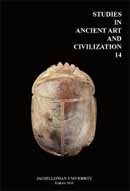Iconography of the Ptolemaic queens on coins: Greek style, Egyptian ideas?
Iconography of the Ptolemaic queens on coins: Greek style, Egyptian ideas?
Author(s): Agnieszka FulińskaSubject(s): Archaeology
Published by: KSIĘGARNIA AKADEMICKA Sp. z o.o.
Summary/Abstract: The popular notion that the Ptolemies ruled in Alexandria without any consideration for the needs and mentality of their Egyptian subjects has long ago been abandoned; the concept of a far more syncretic character of the Greek rule in Egypt produced many views, from poorly documented hypotheses about an Egyptian aristocrat among the wives of Ptolemy Soter (Tarn 1929), to the recent stress on the blending of cultures (Koenen 1993; Ashton 2001; Stanwick 2008). Nowadays hardly anyone denies the importance of the Egyptian factor in the general image of the dynastic politics, art, and propaganda, but Ptolemaic coinage seems to be exempt from such treatment, mostly due to the entirely Greek means and style that it presents. A closer look at some aspects of monetary imagery, however, makes one wonder if this approach is substantiated, since several elements seem to be inexplicable within the Greek/Macedonian frame of mind only, and therefore must have originated elsewhere, which in turn implies that they were aimed at an audience other than Greek. In this paper I would like to analyse four types of coins, either issued in the names of the Ptolemaic queens or bearing a queen’s portrait and/or name in the legend, in order to supply arguments for the thesis that coins, despite their general ‘non-Egyptian’ character, conveyed meanings understandable only when both Greek and Egyptian contexts were taken into consideration.
Journal: Studies in Ancient Art and Civilization
- Issue Year: 2010
- Issue No: 14
- Page Range: 73-92
- Page Count: 20
- Language: English

